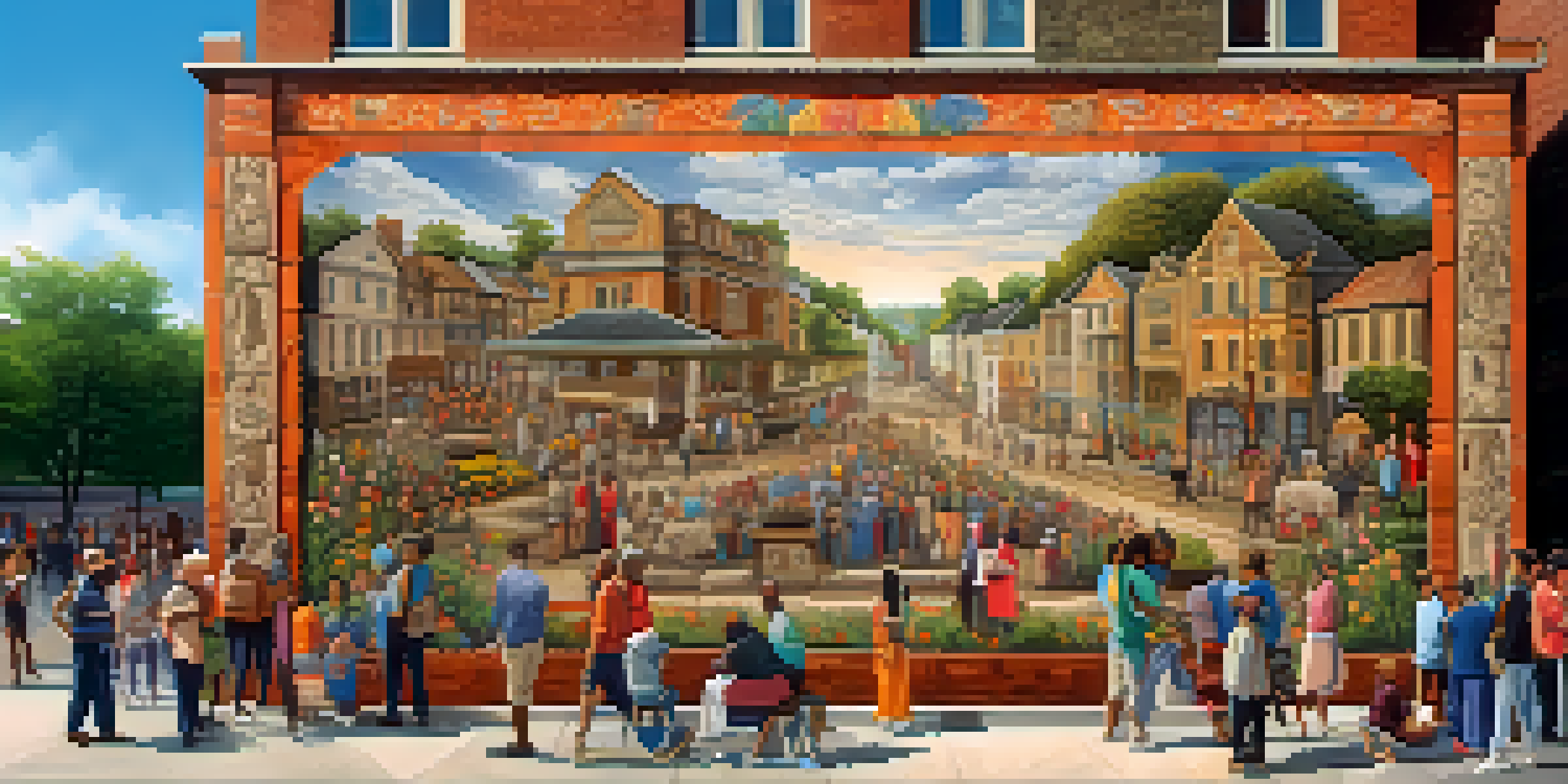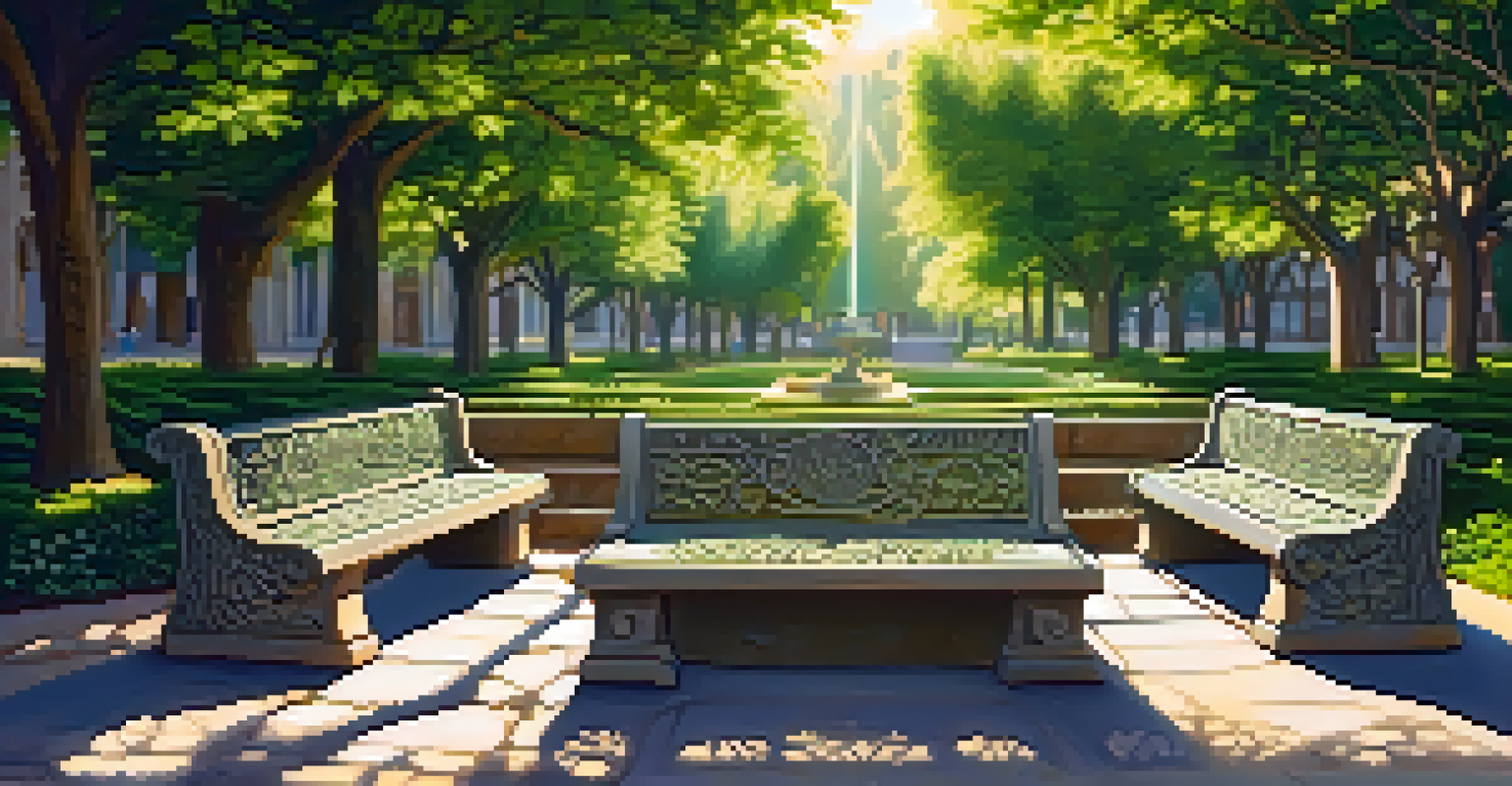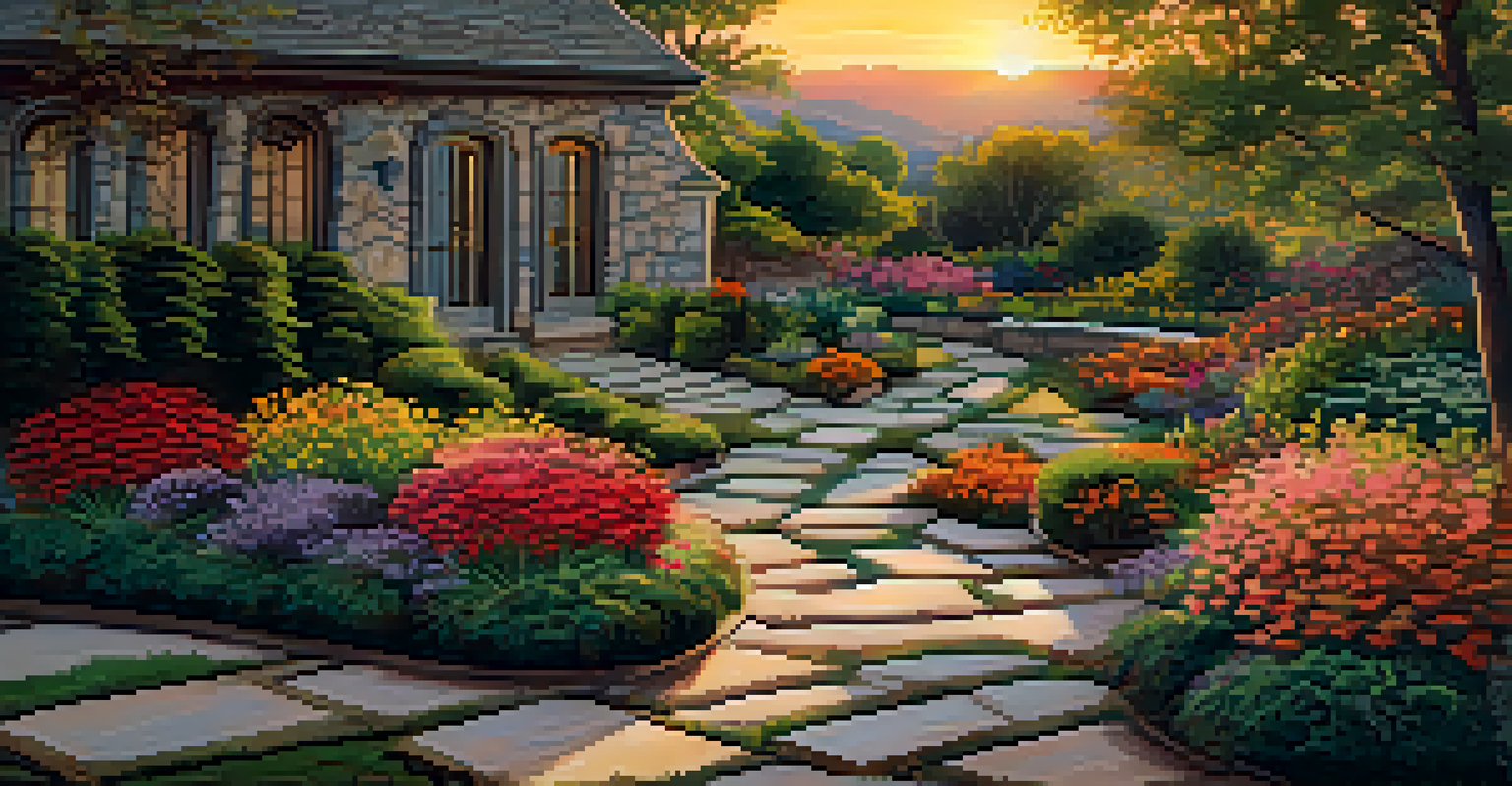The Aesthetic Appeal of Carved Stone in Public Spaces

Introduction to Carved Stone in Urban Design
Carved stone has a rich history that blends artistry with architecture, creating striking visuals in public spaces. From ancient temples to modern parks, the allure of stone carvings captivates the imagination. These artistic elements not only beautify our surroundings but also invite reflection and connection to history.
Art enables us to find ourselves and lose ourselves at the same time.
In cities bustling with activity, carved stone provides a moment of pause, encouraging people to appreciate the craftsmanship involved. The texture and detail in each carving tell a story, transforming ordinary spaces into extraordinary experiences. It’s like stepping into a gallery where nature and artistry converge.
Moreover, the use of carved stone in public spaces fosters a sense of identity and place. Local artists often draw inspiration from their environment, reflecting the culture and heritage, making the spaces feel uniquely theirs. This connection between art and community is vital for creating vibrant cityscapes.
Historical Significance of Carved Stone
Carved stone has been a fundamental part of human expression since ancient civilizations. From the pyramids of Egypt to the intricate carvings of Greek temples, stone artistry has marked significant cultural milestones. Each piece not only serves a structural purpose but also conveys the values and beliefs of its time.

In many cultures, stone carvings symbolize strength and endurance, qualities that resonate in public spaces. Think of the majestic statues in city squares; they stand as guardians of history, reminding us of our shared past. Such installations invite storytelling, igniting curiosity in both locals and visitors alike.
Carved Stone Enhances Urban Identity
Carved stone in public spaces fosters a unique sense of identity and cultural connection within communities.
As we continue to incorporate carved stone into modern design, we honor these historical legacies while creating spaces that speak to contemporary society. This fusion of past and present enriches our environments, providing deeper meaning and context to the areas we inhabit.
The Role of Carved Stone in Landscape Architecture
In landscape architecture, carved stone serves as a captivating focal point that enhances natural beauty. It can define pathways, frame gardens, or create seating areas that blend seamlessly with their surroundings. Imagine walking through a park where intricate stone benches invite you to sit and enjoy the scenery; this is the magic of carved stone.
The best way to predict the future is to create it.
Furthermore, the durability of stone ensures that these installations withstand the test of time, requiring minimal maintenance. As seasons change, the stone remains a steadfast presence, contrasting beautifully with the surrounding flora. This permanence creates a sense of stability and continuity in public spaces.
Additionally, the tactile nature of carved stone invites interaction, encouraging visitors to touch and explore. This engagement fosters a connection between people and their environment, transforming spaces into communal hubs where experiences are shared. Ultimately, the integration of carved stone in landscapes nurtures both beauty and functionality.
Carved Stone as a Medium for Public Art
Public art plays an integral role in shaping community identity, and carved stone is a powerful medium in this realm. Artists utilize stone to craft large-scale sculptures that provoke thought and inspire dialogue among viewers. These pieces often reflect community values, making art accessible to everyone, regardless of their background.
For example, a large stone mural depicting local history can spark conversations about heritage and culture. Such installations not only beautify the space but also serve as educational tools, connecting residents to their roots. This shared experience cultivates a sense of belonging and pride within the community.
Sustainability in Stone Use
Using responsibly sourced carved stone promotes eco-friendly practices while enhancing the beauty of urban landscapes.
Moreover, carved stone installations can adapt to various themes, from abstract designs to detailed narratives. This versatility allows for creative expression that resonates deeply with the audience, transforming public spaces into dynamic galleries. The presence of carved stone art encourages ongoing engagement and appreciation for the arts.
Environmental Considerations in Carved Stone Use
Incorporating carved stone into public spaces also prompts discussions about sustainability and environmental impact. Natural stone is a renewable resource, and when sourced responsibly, it can minimize ecological footprints. This commitment to sustainability resonates with communities increasingly focused on preserving their environment.
Moreover, carved stone can contribute to urban cooling and biodiversity. By integrating stone elements into green spaces, we create habitats for local wildlife while enhancing the aesthetic appeal. For instance, stone walls can support climbing plants, fostering a balance between hard and soft landscaping.
As cities evolve, the challenge lies in finding harmony between development and sustainability. Carved stone offers a solution, marrying beauty with eco-conscious practices. This approach not only enhances public spaces but also educates the community on the importance of environmental stewardship.
Community Engagement Through Stone Carving
The process of creating carved stone features can engage the community, bringing people together for a common purpose. Workshops and collaborative projects allow residents to participate in the artistic process, fostering a sense of ownership over their public spaces. This hands-on involvement builds camaraderie and pride in shared environments.
For example, a community project may invite local artists and residents to design a stone mural reflecting their neighborhood's history. As participants work side by side, they not only acquire new skills but also form bonds that strengthen community ties. This collaborative spirit becomes an essential part of the artwork itself.
Community Engagement through Art
Collaborative stone carving projects strengthen community ties and encourage shared ownership of public art.
Ultimately, community engagement through stone carving nurtures creativity and fosters connection. These initiatives empower individuals to express their identities while contributing to a collective vision. The resulting artworks serve as lasting reminders of the collaborative journey undertaken by the community.
The Future of Carved Stone in Public Spaces
As we look to the future, the role of carved stone in public spaces continues to evolve. With advancements in technology, artists can now explore innovative techniques while honoring traditional craftsmanship. This blend of old and new creates opportunities for unique designs that challenge conventional boundaries.
Moreover, the growing trend of sustainable design encourages architects and artists to rethink how carved stone can be integrated into urban environments. By prioritizing eco-friendly materials and methods, we can create spaces that not only look beautiful but also respect our planet's resources. The future is bright for those willing to innovate.

As cities become increasingly crowded, the need for aesthetic and functional public spaces becomes paramount. Carved stone, with its timeless appeal and versatility, will undoubtedly remain a key player in shaping urban landscapes. By embracing this art form, we can create spaces that connect people, history, and nature in meaningful ways.